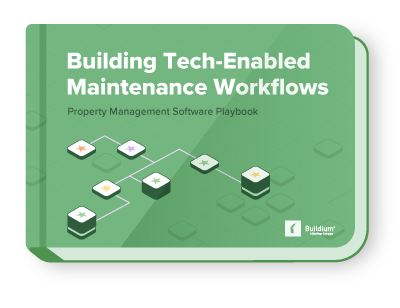Your company website is a powerful tool—are you making the most of it?
Your website is a crucial element of your overall marketing strategy. A strong website increases brand awareness, helps prospects find you, and converts them into leads. When you align your property management website with your overall marketing goals, you can unlock great business results to grow your business in the right direction.
But what if you’re not tech-savvy, or you hired a third party to build your website? Good news—we’ve identified 5 simple steps that anyone can take to align their website with their marketing goals. It’s all about setting clear objectives and making your website work for you.
Here’s a 5-point checklist for making sure your website is achieving your marketing goals.
#1: Identify Your Ideal Visitor
Your first step is to identify your ideal visitor. Who is your website for, and what action do you want them to take? Take stock of your website and user experience through the lens of your ideal visitor. Is it easy for visitors to navigate around your site and find what they need? Do you have effective calls-to-action in place?
If you cast too wide a net, you run the risk of having a crowded, confusing user experience that leaves all visitors feeling a little lost. Evaluate your website with 1 to 3 different visitors in mind. If attracting clients is a top marketing goal for your business, your website should reflect that. Do owners have their own navigation tab on your site? Are you engaging them with friendly, easy-to-use forms to collect contact information? By asking yourself who your website is for and which actions you want them to take once they get there, and you’ll have a clear framework for evaluating your website.
#2: Make a Great First Impression
Now that you know who you’re trying to impress, make sure you’re actually impressing them! In order for your website to fulfill your marketing goals, you need a website that is welcoming and easy to use. You want visitors to come on in and stay awhile, which means you need to make a great first impression.
When visitors find your site, are they greeted by pop-up ads? Sure, the extra revenue from ad content is great, but it could cost you in the long run. Not only do pop-up ads obscure your website’s content—a recent survey from SurveyMonkey found that 68 percent of respondents would block a website because they have too many ads.
Instead of greeting visitors with a pesky pop-up ad, why not greet them with a pop-up signup form to receive your email newsletters? Or, opt for a more subtle pop-up from Hello Bar; or skip pop-ups altogether with a live chat plug-in like Drift to offer customers real-time support.
#3: Measure Your Traffic
Don’t let data scare you away! Analyzing website traffic is one of the most effective ways to align your site with your marketing goals. It’s all about knowing which metrics are important and what the numbers mean. For property management websites, it’s important to know where your traffic is coming from and what your visitors are doing once they’re on your site.
Are people finding your website through social media; through search engine results; or through paid ads? If your organic traffic (visitors generated by unpaid efforts) is low, it’s likely that you need to optimize your website for SEO. Search engine optimization and search marketing help property management websites to rank higher in search engine results for certain keywords. And don’t forget about social media—sharing content from your website on Facebook, Twitter, LinkedIn, and Instagram drives traffic to your site and increase brand awareness. Listen to our recent social media webinar for property managers for tips and tools to get started.
#4: Track Customer Satisfaction
At the end of the day, your marketing efforts are all about customer satisfaction, right? Go straight to the source and survey customers about your website. If your site is one of the primary ways in which you interact with tenants and owners, it’s important that they feel good about the user experience.
If improving interactions with existing and potential customers is one of your marketing goals, build a 5-minute survey on a platform like SurveyMonkey, and invite those on your email list to share feedback. Ultimately, you want to give your visitors a reason to come back to your website. Design your content with them in mind: Offer useful webinars, create targeted email marketing lists, and offer features like live chat for on-demand customer support.
#5: Inventory Your Assets
Your website is a treasure trove of useful data about your customers. The back-end of your site is a roadmap for what’s important to them, which content is most useful, and the services that interest them. The data will not only help you to achieve your marketing goals, it will inform what those goals should be.
What’s your most shared or viewed content? Which pages get the most traffic? Which keywords are you ranking for? How long are visitors staying on your page? Use this information to guide your content strategy, improve landing pages, and strengthen your keyword strategy.
Property managers: Is your website up to snuff? Discover 5 tips for your website on the #BuildiumBlog! Share on XHave you tried any of these strategies for your property management website? Share your advice in the comments below!
Read more on Growth

